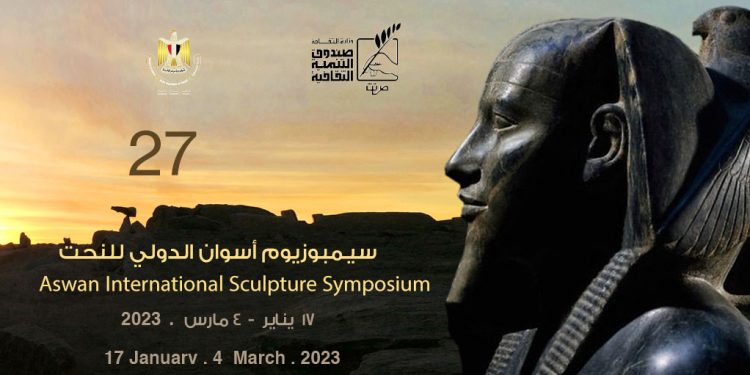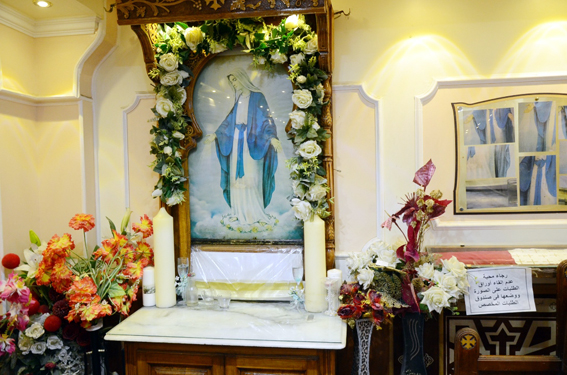Once again, Egypt’s southernmost city of Aswan has hosted the splendid annual Aswan International Sculpture Symposium (AISS) from 17 January 2023 to 4 March 2023. Aswan is a city of magical beauty that sits on the east bank of the River Nile some 800km south of Cairo, basking in the serenity of the Nile and the rugged hilly terrain that embraces it. The region boasts a charming combination of Nubian and Egyptian cultures.
“The history of the Aswan International Sculpture Symposium has made it one of the most important art forums in the Middle East.” That was how Egypt’s Culture Minister Nevine al-Kilani described the AISS as it opened this year in its 27th round, featuring participation by 17 artists from Egypt and the world over.
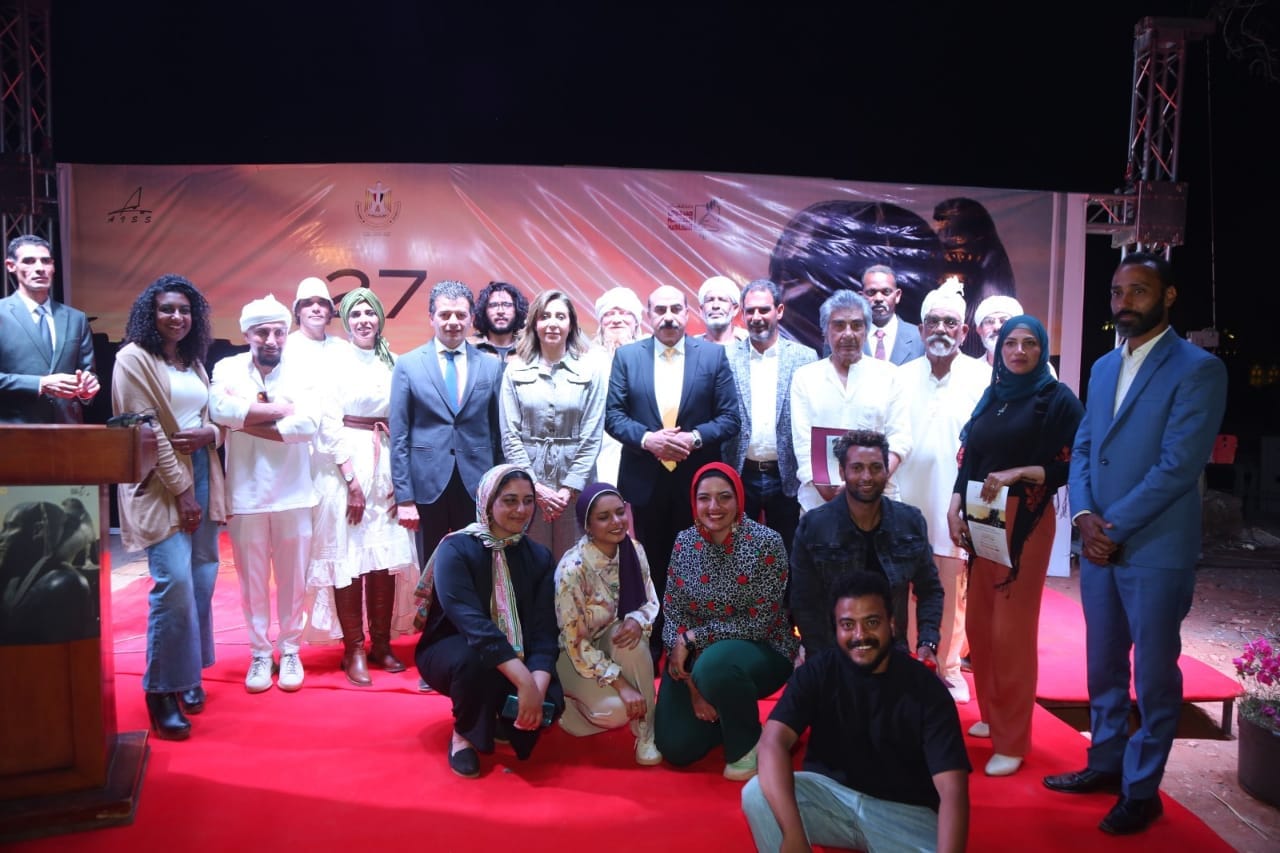
The participants in the symposium received newly designed honorary certificates depicting the carved diorite ancient Egyptian colossus of king Khafre, which was selected by the Supreme Committee of the AISS to be the emblem of this round.
For his part, Aswan Governor Ashraf Attiya, commmended the symposium officials for the success of this year’s round, which he said “still plays the sculptural music of Aswan granite”.
Fascinating works
International sculptors made substantial contributions to the Symposium.
Spanish sculptor Pedro Jordan, a first-time participant in the Symposium, carved a great red granite fossil star, and opened holes in it. The work, he said, was inspired by a nursery song he always loved: “In my Garden I saw a Falling Star”.
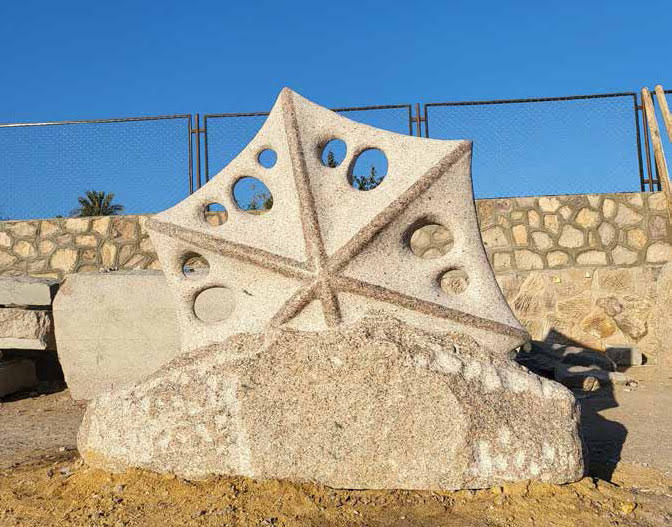
“The Challenge”, an abstract work suggesting a motorbike engine, was carved by French sculptor Laurent Mura, another first-time participant. Mura’s piece ingenuously depicts a motorbike engine by depending on the sharp contrast between rough and finished granite rocks.
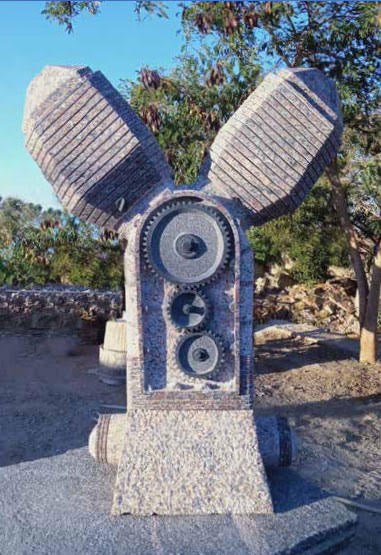
Among the young Egyptian sculptors who took part in the Symposium was Ahmed Bassioni who sculpted “Balancing” in the shape of a moving laundry peg. His idea was to express the balancing act humans must make between the various contradicting stresses they face on a daily basis.
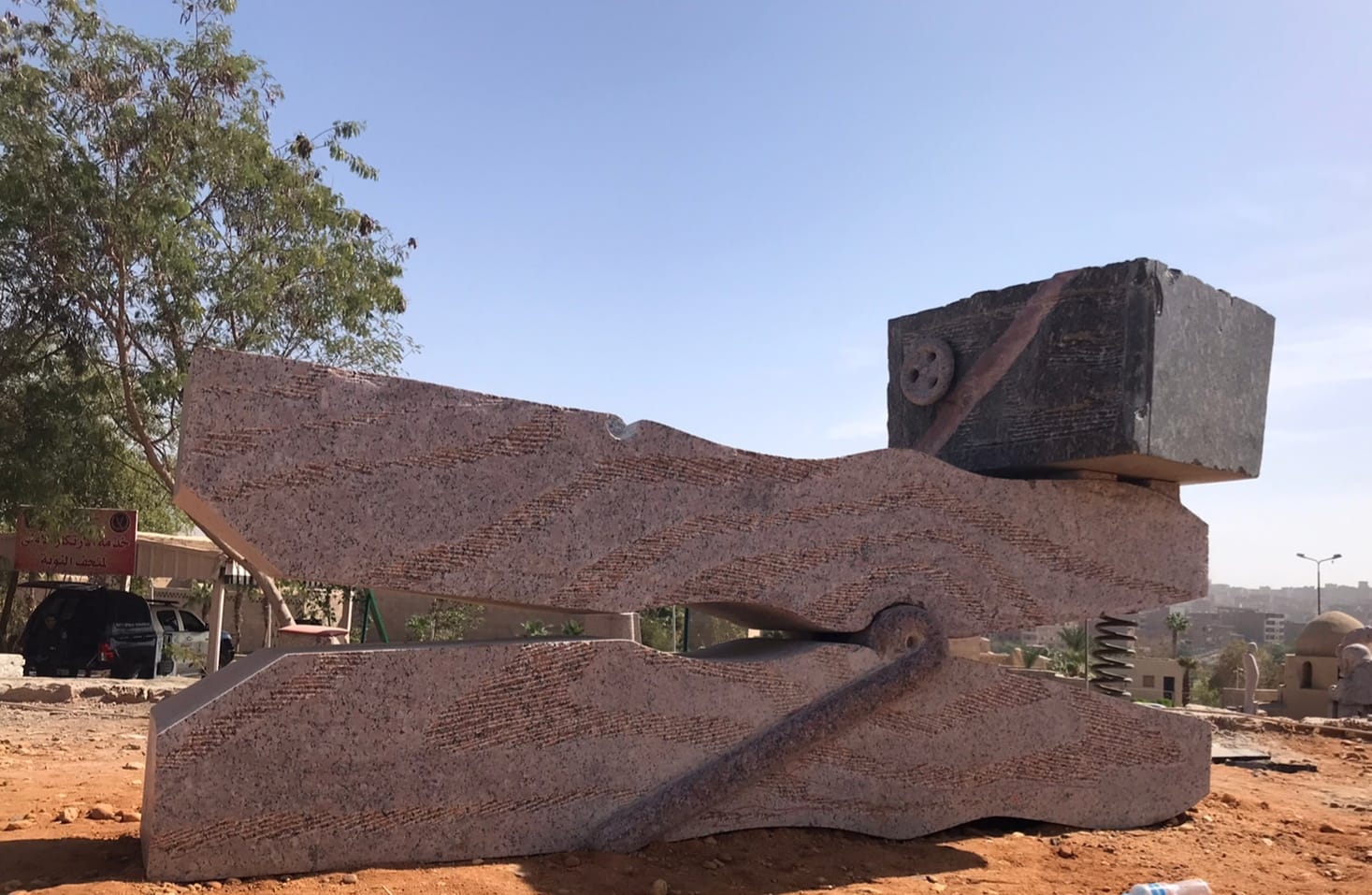
Reem al-Hefnawy created “Odyssea” inspired by the Odyssey.
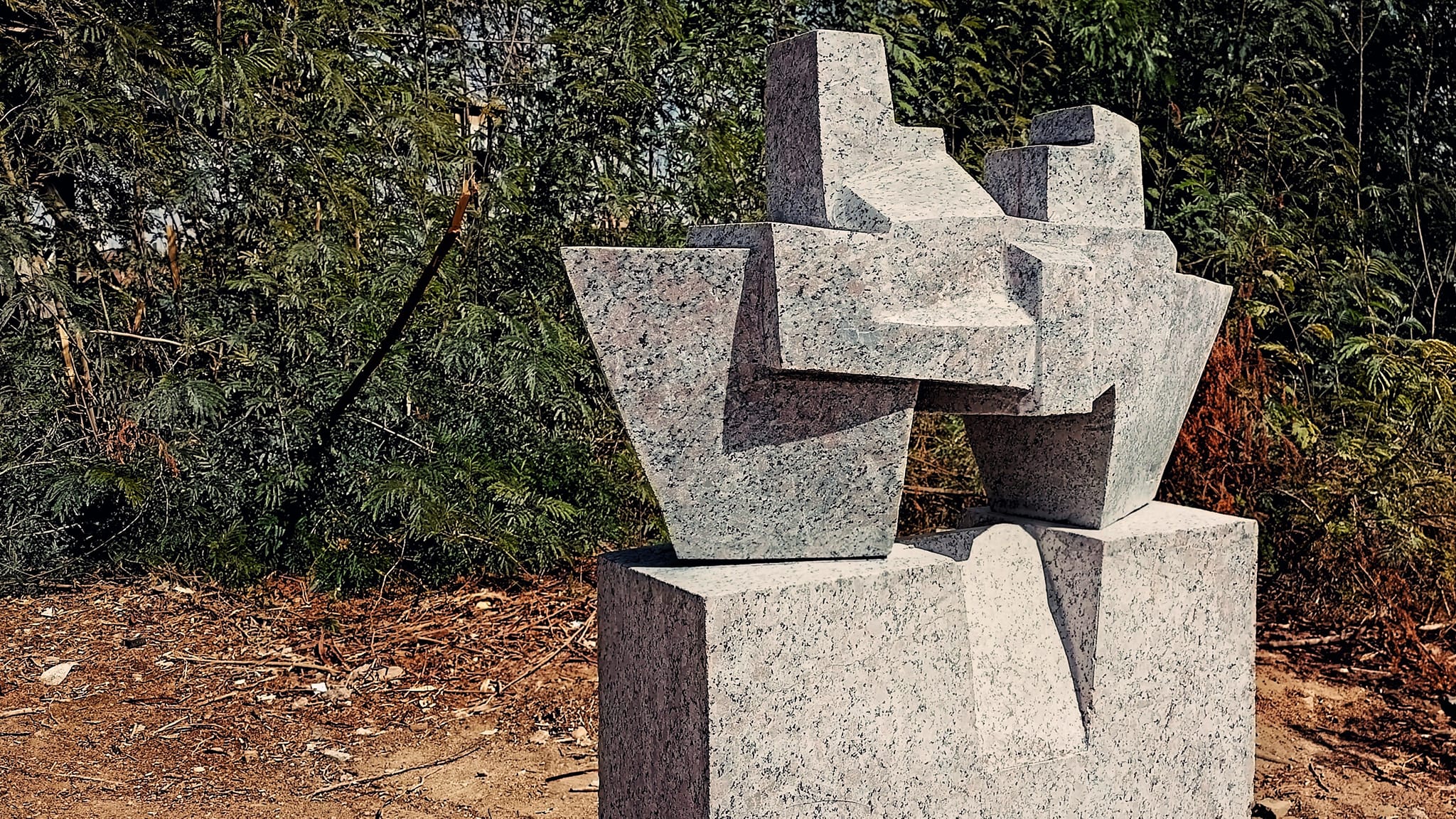
With inspiration from ancient Egypt, Samar al-Bassal sculpted the goddess Nut, goddess of the sky, in pink granite. The work is full of the energy and strength of a woman’s body, expressing femininity, flexibility, and robustness; and reveals Bassal’s passionate interest in the curved line. With International Women’s Day close by, on 8 March, the work was an apt celebration of women.
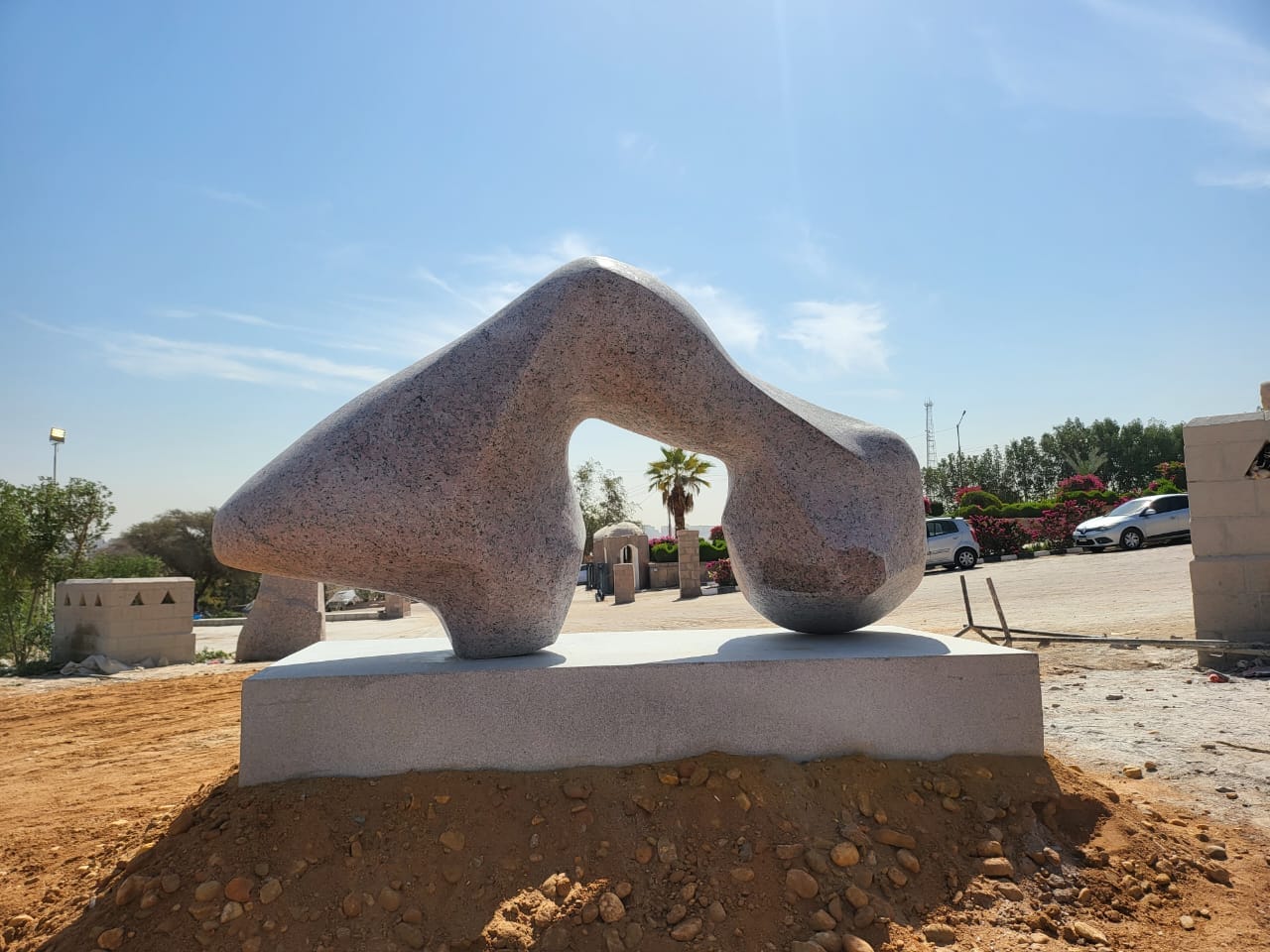
Bergo al-Naggar carved an abstract work of a woman’s body in which he inserted a piece of crystal that would reflect the sunlight which the statue was so aligned+ as to be bathed in it on 8 March. Obviously, Naggar was influenced by the ancient Egyptian practice of solar alignment on specific objects at significant specific dates.
Tribute to Sir Magdi
One work that gained fond applause from the public was a statue of Sir Magdi Yacoub, the world renowned Egyptian British heart surgeon who founded the Aswan Heart Centre which offers patients top-of-the-line heart surgery free of charge. Sir Magdi is an iconic figure widely loved, cherished, and revered by Egyptians for both his scientific and humanitarian stature. Watani’s Nader Shukry reports that the statue was sculpted out of red granite by AISS Commissioner Nathan Doss.
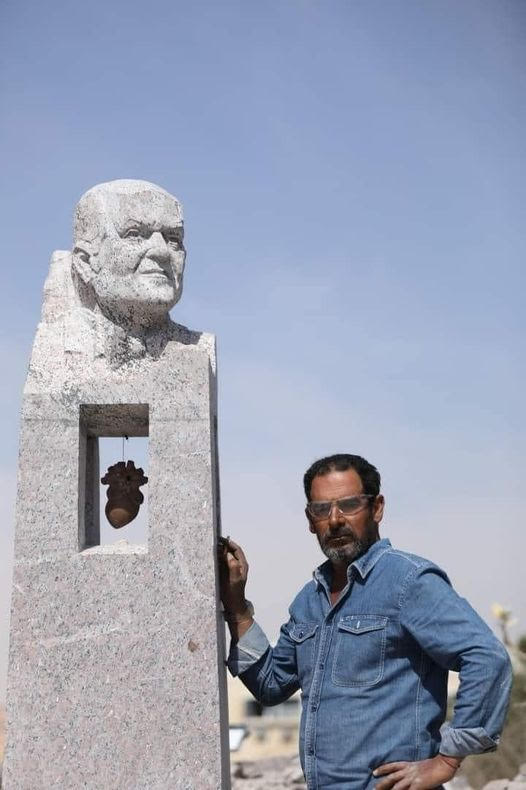
A bust of Sir Magdi stands on his body which is shaped as an Egyptian obelisk 2.5m high, with four windows, one on each side, looking inwards onto a stone heart hanging by a thread and lit by a candle. Mr Doss said the candle was reminiscent of candles that shine in front of saints’ icons. Now that the symposium has closed, the statue will be transferred to the Aswan Heart Centre.
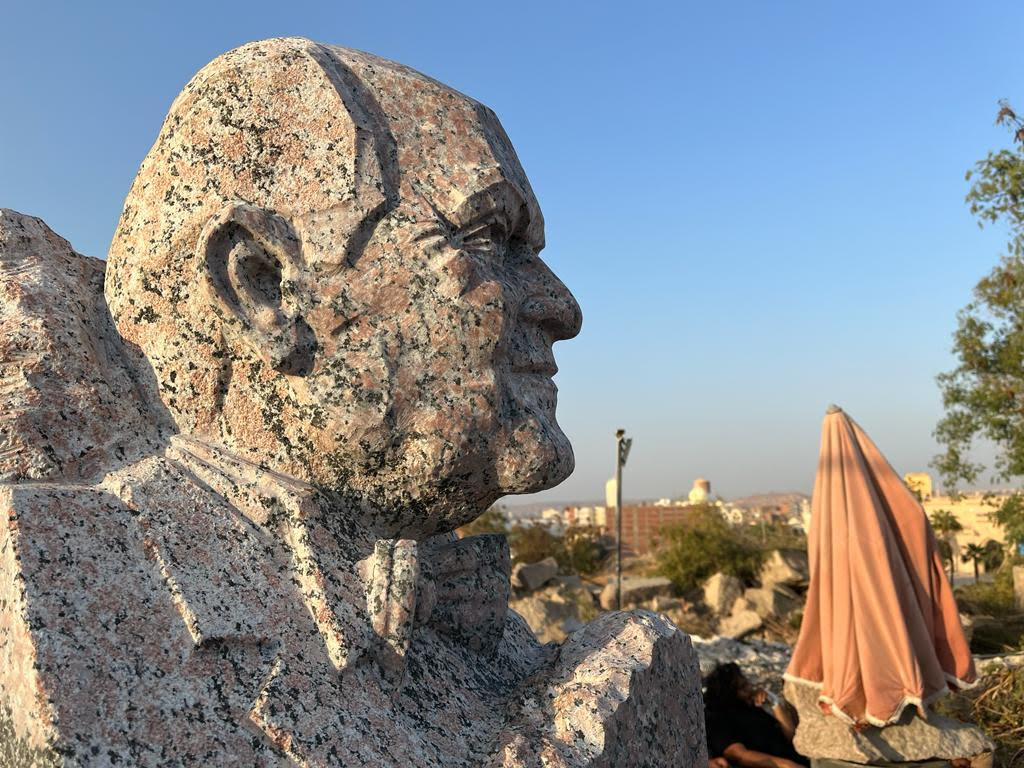
Cradle of sculpting
The art of sculpting has been known in Egypt since predynastic times. Ancient Egyptians perfected the art, masterfully carving the hardest stone, such as diorite, granite and basalt. Even though it steadily declined since the Arab Muslims conquered Egypt in the 7th century—Islam is inclined to see statues as idols—the art saw a revival in the 20th century as Egypt moved into an enlightenment era.
In 1908, the School of Fine Arts was established in Cairo, and has ever since turned out generation after generation of talented young artists. Among those who excelled and carved their names in the history of sculpture was Mahmoud Mukhtar (1891 – 1934) who is famous as Egypt’s foremost sculptor and whose statues grace squares in Cairo and Alexandria. His famous Nahdet Masr (Egypt’s Renaissance) statue, featuring an Egyptian peasant woman raising one hand and looking into the horizon while the other hand rests on a rising sphinx, stands majestically on the Nile bank in Giza, marking the beginning of the wide palm-lined boulevard that leads to Cairo University, Egypt’s first university founded in 1908.
Following Mukhtar’s Egyptian-inspired creations came those of another talented generation that included Mahmoud Moussa (1913 – 2003), Abdel-Qader Rizq (1912–1978), Gamal al-Segeiny (1917 – 1977), Sobhy Girgis (1929 – 2013), and Adam Henein (1929 – 2020).
Henein’s dream of reviving the art of sculpture on hard rock materialised in 1996 when he collaborated with former Culture Minister Farouk Hosni to found the Aswan International Sculpture Symposium (AISS) which he headed to his last day. It was fitting for this annual event to be held in Aswan, a city that since antiquity has been famous for its granite quarries.
The international symposium was meant to create a new world of vibrant splendour. It has no specific theme; artists are given technical advice and complete freedom to sculpt what they wish.
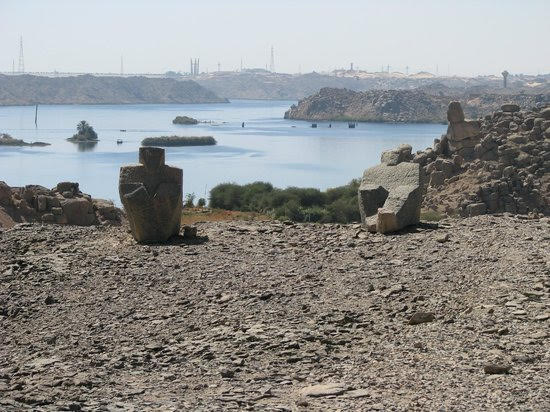
The works of the Symposium are exhibited in a permanent display, the Aswan Sculpture Park. There are now more than 200 statues of various sizes displayed on the high plateau in the flow of a waterfall overlooking the lake between Aswan and the High Dam, making thus full use of the magnificent landscape.
Watani International
15 March 2023


